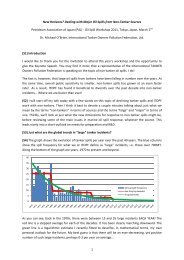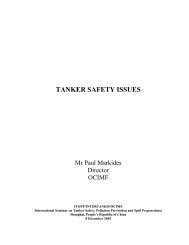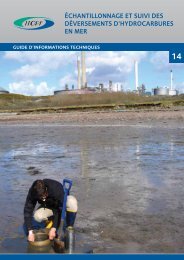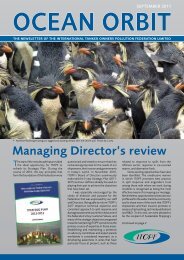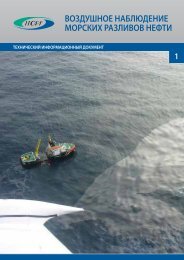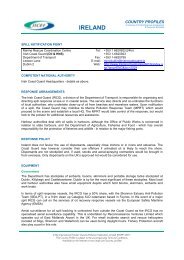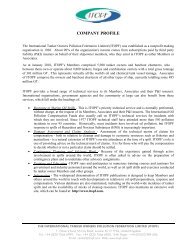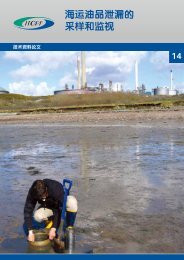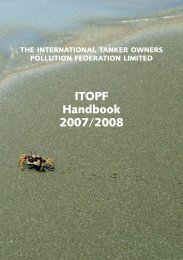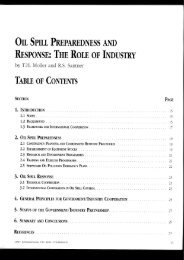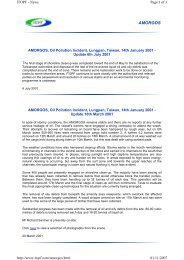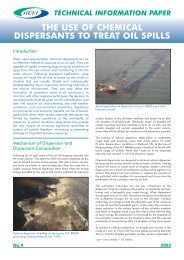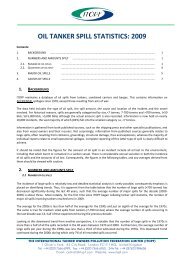Members Handbook 20023 - ITOPF
Members Handbook 20023 - ITOPF
Members Handbook 20023 - ITOPF
Create successful ePaper yourself
Turn your PDF publications into a flip-book with our unique Google optimized e-Paper software.
allow natural clean-up and recovery to<br />
take its course. Experience around the<br />
world has shown, for example, that<br />
sensitive areas such as marshes and<br />
mangroves often recover more quickly<br />
and completely if invasive clean-up<br />
techniques and physical disturbance are<br />
avoided. Natural cleaning can also be<br />
very effective on rocky shores that are<br />
exposed to strong wave action.<br />
could otherwise lead to further pollution<br />
of surrounding areas. A combination of<br />
clean-up techniques is normally used<br />
when cleaning contaminated shorelines,<br />
including manual and mechanical<br />
removal, flushing or washing with water<br />
at high or low temperatures and<br />
pressures, and even wiping with rags<br />
and sorbent materials.<br />
It is important to choose techniques<br />
which are appropriate for the level of<br />
contamination and shoreline type,<br />
which may range from mud flats,<br />
through sandy and cobble beaches, to<br />
rocky shores and high cliffs, as well as to<br />
man-made structures such as<br />
breakwaters and protective walls.<br />
It is important to ensure that the<br />
techniques selected do not do more<br />
harm than good. This requires a sitespecific<br />
assessment of the environmental<br />
and economic benefits of the<br />
proposed actions. In some cases the<br />
most appropriate strategy will be to<br />
Bioremediation<br />
The application of oil-degrading<br />
bacteria and nutrients to contaminated<br />
shorelines to enhance the process of<br />
natural degradation has generated<br />
considerable interest for more than two<br />
decades. However, it has so far not been<br />
demonstrated to be technologically<br />
feasible or beneficial for large-scale<br />
restoration projects.<br />
Disposal<br />
At-sea recovery and shoreline clean-up<br />
generate substantial amounts of oil and<br />
oily waste which need to be<br />
transported, temporarily stored and<br />
ultimately disposed of in an<br />
environmentally acceptable manner.<br />
Such operations often continue long<br />
after the clean-up phase is over.<br />
Liquid oil and oily water may be<br />
reprocessed at a refinery. Oily material<br />
can be used as a low-grade feedstock in<br />
some industrial processes and it may<br />
also be stabilised for use in construction<br />
projects, as a low-cost secondary raw<br />
material. More traditional disposal<br />
routes include incineration and landfill.<br />
17



